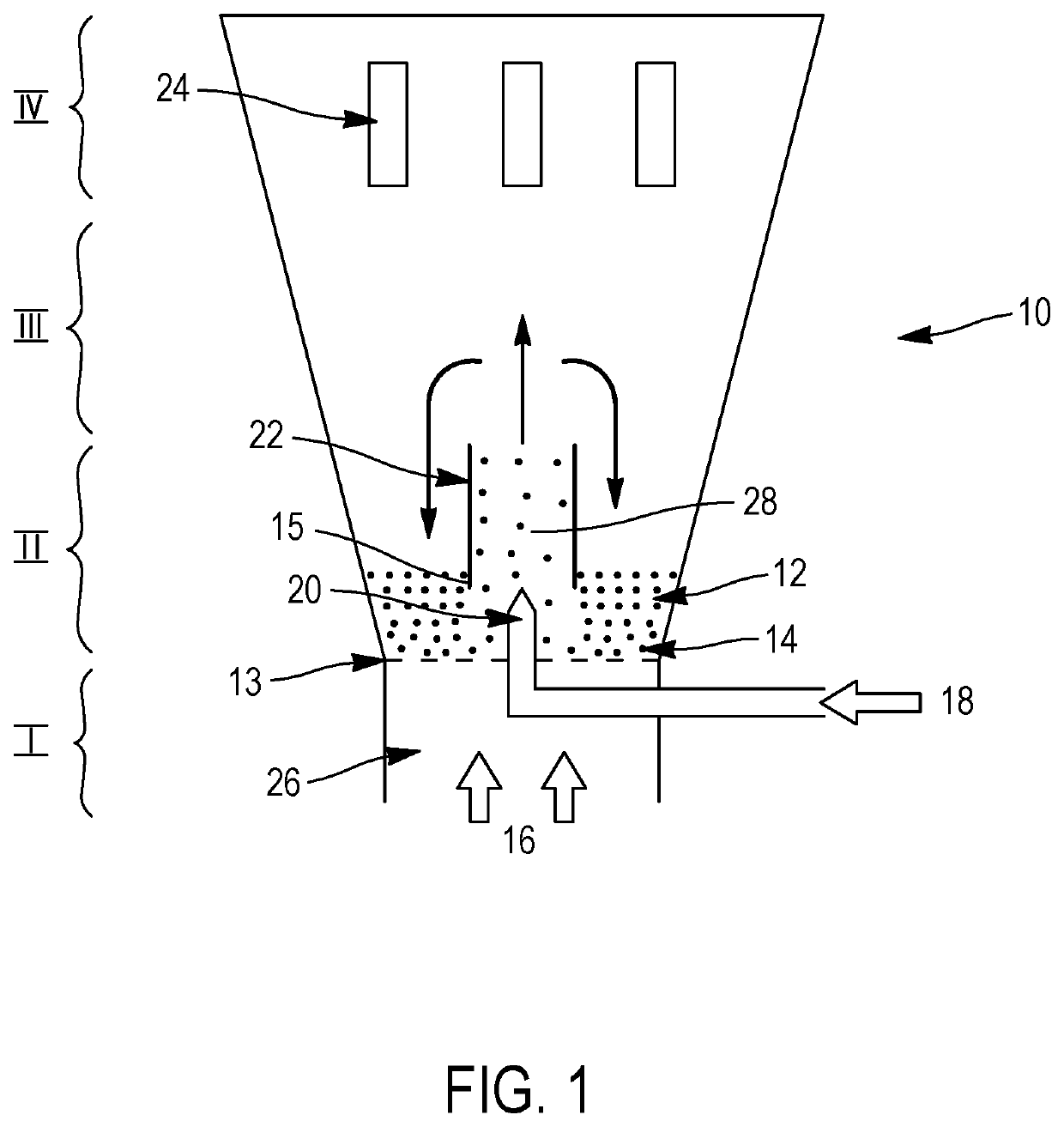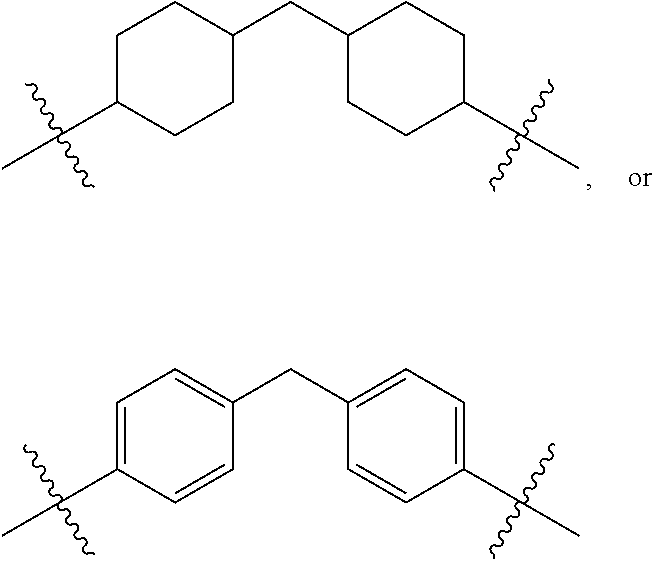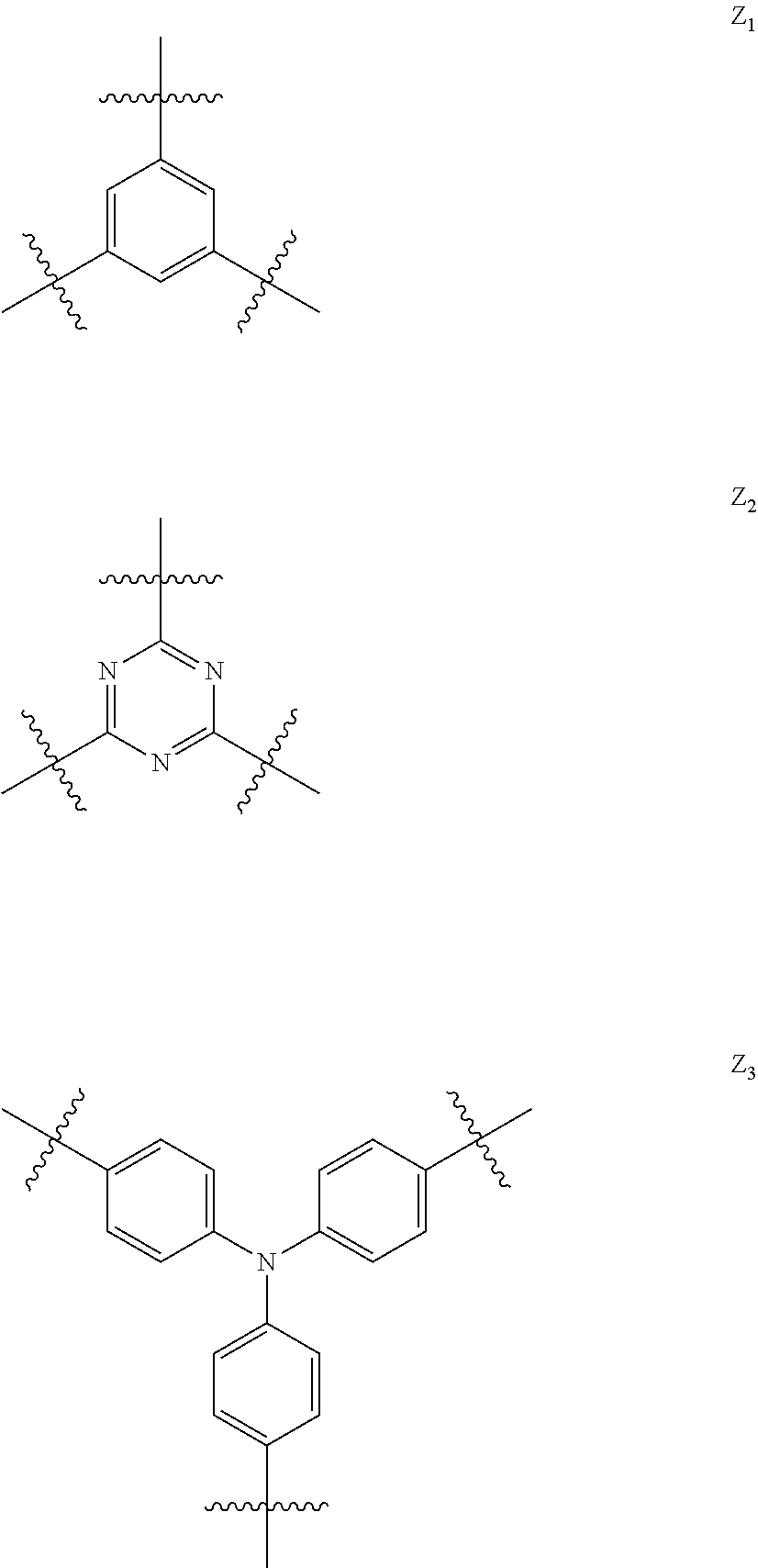Method for preparing bitumen solid at ambient temperature, in a fluidised air bed
a fluidised air bed and ambient temperature technology, applied in the direction of coatings, etc., can solve the problems of high restrictions, dangerous transportation of bitumen under hot conditions in liquid form, and certain drawbacks of hot-condition transportation of bitumen,
- Summary
- Abstract
- Description
- Claims
- Application Information
AI Technical Summary
Benefits of technology
Problems solved by technology
Method used
Image
Examples
first embodiment
[0078] the cores of the pellets consist of a first composition based on pitch.
second embodiment
[0079] the cores of the pellets consist of a first composition based on pitch and on at least one bitumen base.
[0080]According to one embodiment of this variant, the first composition comprises at least one pitch having a penetrability at 25° C. ranging from 0 to 20 1 / 10 mm and a ring and ball softening point (RBSP) ranging from 115° C. to 175° C., it being understood that the penetrability is measured according to the standard EN 1426 and that the RBSP is measured according to the standard EN 1427.
[0081]According to one embodiment of this variant, the first composition comprises:[0082]at least one pitch having a penetrability at 25° C. ranging from 0 to 20 1 / 10 mm and a ring and ball softening point (RBSP) ranging from 115° C. to 175° C., it being understood that the penetrability is measured according to the standard EN 1426 and 40 that the RBSP is measured according to the standard EN 1427,[0083]at least one bitumen base, and[0084]at least one chemical additive.
Third Variant:
[008...
experiment 1
[0528 is carried out in device 2 (free of insert and in which the air flow rate is constant throughout the granulator).
[0529]Experiments 2 to 8 are carried out in device 1 (process according to the invention).
[0530]The implementation parameters of the various experiments are given in table 2 below. The spraying pressure (in bar) is from 1 to 3 bar.
TABLE 2Examples123 (*)4 (*)5 (*)678Coating layer precursor composition% of viscosifying agent10101057.510% of anticaking agent20201512.510Process implementation conditionsAmount of cores fluidized (in g)10509371305114211071123Amount of precursor composition sprayed (in g)1003407194224110110601000Fluidization flow rate (in m3 / h)350300300280280250250250Product temperature (in ° C.)1435353535171717Spraying flow rate (in g / min)29.325.122.610.83.313.915.414.1(*) following the agglomeration of the pellets during the process, said process was interrupted before having sprayed all of the precursor composition.
[0531]Examples 1 to 5 are counterexamp...
PUM
| Property | Measurement | Unit |
|---|---|---|
| Temperature | aaaaa | aaaaa |
| Temperature | aaaaa | aaaaa |
| Temperature | aaaaa | aaaaa |
Abstract
Description
Claims
Application Information
 Login to View More
Login to View More - R&D
- Intellectual Property
- Life Sciences
- Materials
- Tech Scout
- Unparalleled Data Quality
- Higher Quality Content
- 60% Fewer Hallucinations
Browse by: Latest US Patents, China's latest patents, Technical Efficacy Thesaurus, Application Domain, Technology Topic, Popular Technical Reports.
© 2025 PatSnap. All rights reserved.Legal|Privacy policy|Modern Slavery Act Transparency Statement|Sitemap|About US| Contact US: help@patsnap.com



